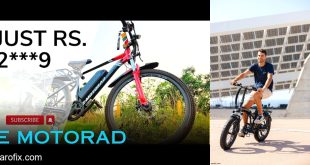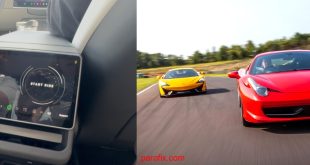“`html
Is a Homemade Custom Motorized Bicycle Cool?
The allure of a homemade custom motorized bicycle goes beyond simple transportation—it’s a blend of creativity, engineering, and sustainable mobility. Whether you’re a beginner tinkerer or an experienced builder, crafting a motorized bicycle at home offers a unique opportunity to design a ride that’s both functional and personalized.
Why a Homemade Motorized Bicycle Stands Out
Unlike mass-produced electric bikes, a homemade custom motorized bicycle lets you control every detail, from the frame reinforcement to the motor type and even the aesthetics. Here’s why they stand out:
- Customization: Choose a vintage frame or modern lightweight alloy, paint scheme, and accessories that reflect your personality.
- Power Options: Options range from small 50cc gas engines to 500W+ electric motors, giving you flexibility in speed and torque.
- Learning Experience: Building a motorized bike teaches mechanical, electrical, and design skills that are invaluable for DIY enthusiasts.
- Eco-Friendly Transport: Electric motorized builds produce zero emissions while reducing your carbon footprint compared to cars.
Technical Details to Consider
When designing a homemade motorized bicycle, technical details matter for safety and performance:
- Motor Selection: Hub motors are easy to install and low maintenance, while mid-drive motors offer better hill climbing and efficiency.
- Battery: Lithium-ion batteries are preferred for weight and range; typical DIY builds use 36V–48V packs with 10Ah–20Ah capacity.
- Throttle: Twist throttles or pedal-assist sensors control speed and power output.
- Braking: Upgrade to hydraulic disc brakes for high-speed safety.
- Frame Strength: Reinforce the frame for added motor and battery weight.
- Wiring & Safety: Proper insulation, fuses, and connectors prevent short circuits and overheating.
Personal Experiences and Stories
Building my first motorized bicycle was an adventure. I started with a 1970s Schwinn frame, installed a 500W brushless electric motor, and wrapped a 48V 15Ah battery into a custom frame bag. Riding through city streets, I felt a unique sense of freedom—I could pedal for exercise or hit 28 mph effortlessly using the motor. On one weekend, a friend and I joined a local DIY e-bike meetup, and the reactions were priceless: people were intrigued by the mix of retro style and modern performance.
Another memorable experience was taking the bike on a 20-mile countryside ride. The dual-mode assist allowed me to conserve battery on flats and use full power on hills. It wasn’t just a bike—it was a statement about what sustainable DIY transportation can look like.
Frequently Asked Questions
Is it legal to ride a homemade motorized bicycle?
Regulations vary by country and state. In most U.S. states, electric bikes under 750W and speeds below 28 mph are treated like regular bicycles. Gas-powered DIY bikes may require registration, insurance, and helmet use. Tip: Always check local laws before riding publicly.

How fast can a homemade motorized bicycle go?
Electric builds typically range from 20–35 mph, depending on motor power, battery voltage, and weight. Gas engines can achieve 30–45 mph. Always balance speed with safety by upgrading brakes and suspension accordingly.
Can beginners build their own motorized bike?
Absolutely. Start with kits that include a motor, battery, and mounting hardware. As confidence grows, experiment with wiring, throttle setups, and frame modifications. Tip: Document your build for troubleshooting and safety checks.
What maintenance does a homemade motorized bicycle require?
- Check tire pressure and brake pads before each ride.
- Inspect electrical connections regularly for corrosion or loose wires.
- Lubricate chains and mechanical linkages every 100 miles.
- Charge batteries according to manufacturer recommendations to preserve lifespan.
How much does a homemade motorized bicycle cost?
Costs vary depending on motor type, battery, and bike frame. Electric DIY builds can range from $600 to $2,500. Gas-powered versions may be slightly cheaper but require fuel, maintenance, and potentially legal compliance fees.
Trends and Sustainability
Homemade motorized bicycles reflect a growing trend in sustainable and personalized urban mobility. As cities embrace low-emission transport, DIY e-bikes and motorized bicycles offer practical, eco-friendly alternatives to cars. Future trends include lightweight modular batteries, regenerative braking systems, and IoT integration for monitoring speed, battery, and GPS tracking.
Practical Tips for Building and Riding
- Start Simple: Begin with a proven kit before customizing extensively.
- Upgrade Brakes: Always prioritize safety with reliable braking systems.
- Balance Weight: Distribute motor and battery weight to maintain handling stability.
- Test Incrementally: Test your motorized bike at low speeds before full-speed rides.
- Document Wiring: Label wires and connections for easier troubleshooting.
- Join the Community: Local DIY bike meetups and online forums are great for advice and inspiration.
Conclusion
A homemade custom motorized bicycle is more than just a vehicle—it’s a canvas for creativity, an exercise in engineering, and a sustainable transportation option. From beginner-friendly kits to fully custom builds, these bikes inspire innovation and environmental awareness. Whether for commuting, adventure, or just sheer fun, building and riding your own motorized bike is undeniably cool.
“`
 Electric Bike & Bicycle Repair Hub Master DIY electric and traditional bike repairs with practical tips and trusted product recommendations.
Electric Bike & Bicycle Repair Hub Master DIY electric and traditional bike repairs with practical tips and trusted product recommendations.



